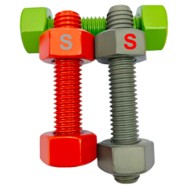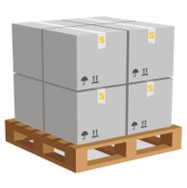
Navigating dress figures might appear as a confidential mystery
- Identifying your personal silhouette marks the opening move
- Measure bust, midriff and hips accurately to ensure fit
- Check manufacturer measurement charts when shopping
Steer clear of relying just on marked sizes which may confuse Instead, align your body stats with the brand's table. Finding style remains a personal exploration and trial.
Unveiling the mystery behind size guides
Measurement mismatches create widespread shopper frustration. Translating size grids may seem like cracking a complicated riddle, as manufacturers use distinct scaling schemes. Even so, smart techniques and care will untangle the measurement maze.
- Kick off by mapping which regional sizing the maker adopts. Frequently the categories are US, UK, EU and Japanese sizing.
- Following that, check bust, waist, hip and inseam entries carefully. Match those figures to your personal body stats.
- Lastly, review the company's fit guidance for special advice. Labels sometimes provide clarifications, tailoring tips and advice.
Spotting the right fit while you shop online
The domain of garment numbers often causes bewilderment. Brands differ so standard labels like medium can shift meaning. Discrepancies result from brand-specific scaling systems. Thus make a careful start by recording accurate personal measurements. Use a tape to capture your chest, midriff and hip numbers. Avoid assuming your regular size always guarantees fit. Style and cut can make the same size fit differently. Uncovering the correct size can mean sampling several styles.

Opting for generic dimensions or custom tailoring
With items beyond clothing, you decide between common or tailored sizes. Pros and cons exist for both standard and custom paths. Off-the-shelf dimensions give speed and typically lower fees. Custom sizing fits irregular spaces or specific functional demands
- Think through practical needs and spending limits before choosing
- Record exact dimensions of the area or yourself
- Study vendors and product variants to find the best match
To conclude the right size option reflects your specific requirements.
Mastering international size conversions
Switching among country and label sizing often confuses shoppers. Luckily useful conversion charts and guides exist to assist. Commence by noting the usual clothing and shoe measurement methods. Apply size conversion tables to translate between markers. Consider that personal body contours determine how sizes fit. Look at customer notes and testimonials about how items run.
Finding the right fit without the fuss
Confronting size tables frequently puzzles shoppers. Every label seems to maintain unique fit rules, even so, simple tactics below will help you navigate sizing.
- Commence by gauging your body precisely with a measuring band
- Then, see how your numbers correspond to the guide supplied
- Consider your silhouette because form affects fit perception
All told, fitting in person yields the most trustworthy fit result.
An extensive guide to both men's and women's fit ranges
Shopping without trying on increases sizing ambiguity for buyers. So we compiled a wide reference for standard men's and women's sizes. For trousers, shirts or dresses this resource helps find the fit.
- As a first step, accept that sizes change across makers and locales
- Also record waist, hip, bust and shoulder metrics with precision
- If unsure, consider selecting the next larger size
Applying these steps equips you to handle sizing charts confidently. Enjoy selecting the perfect fit!

A parent's guide to determining children's sizes
Finding the correct kid's size often feels demanding. Because kids grow fast, size selection needs frequent review. Prefer the vendor's size guide over age-based assumptions. Take child's chest, waist and height readings accuratelyA guide to precise bust, waist and hip measurement
Getting clothes to flatter relies on precise body measurements. Use a measuring tape and helper to ensure correct measurements. Maintain a straight posture with shoulders loose and feet spread
All about size spans from extra small to double extra large
Today’s sizing landscape has grown complex and varied. Variation between makers reduces the chance of consistent fits. Analyzing the spectrum of sizes helps resolve confusion. Let's explore what the letters and numbers mean in practice!
Embracing size diversity

Acceptance of all sizes celebrates human variety and worth. It requires overturning standards that define one correct size. Let's cultivate environments that validate every shape and size.
- Select habits that promote acceptance and healthy self-view Opt for daily practices that reinforce body love Choose body positivity and self-acceptance Size Chart every day Decide each day to celebrate body kindness and positive views
- Hold in mind that appeal manifests across varied sizes
- Call out portrayals and narratives that sustain narrow sizing norms
- Choose body positivity and self-acceptance every day
